#132
On using the scraps
I wrapped up 2022 by butchering a muntjac (which is a very small deer species) and while most of the meat went into proper dishes, like Beef Wellington or hay-baked steaks, or just really good stews, there were some scraps left off the bones or when trimming more noble cuts.
Originally I planned to mince them for Venison Scotch eggs, but didn't feel like cooking them now, so did something else. Still had to mince them though.

One half was venison mixed with fat and spices, the other half – ground pork loin, more fat, and other spices.
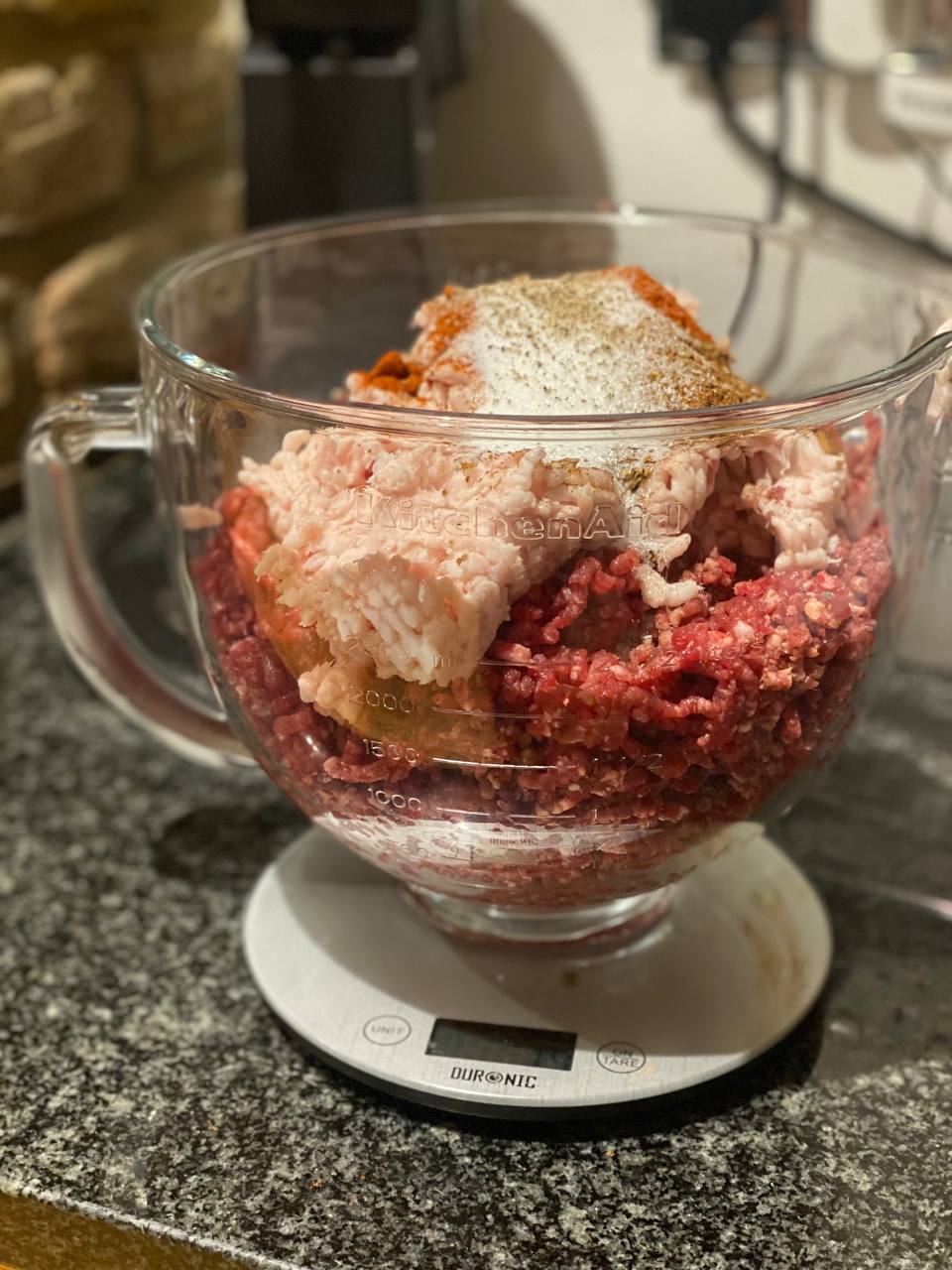
Everything stuffed into natural casing:

And then formed into links: venison bangers and fresh cooking chorizo.

I already got to try a few and they are quite delicious, but next time I'll probably double the spices and throw in some breadcrumbs to have something to absorb the fat when sausages are frying.
The bones were used to make stock, but as we are always running out of freezer space, I reduced almost 10 litres of stock into a syrupy liquid with gelatine, MSG, and salt and then froze in ice cube trays:
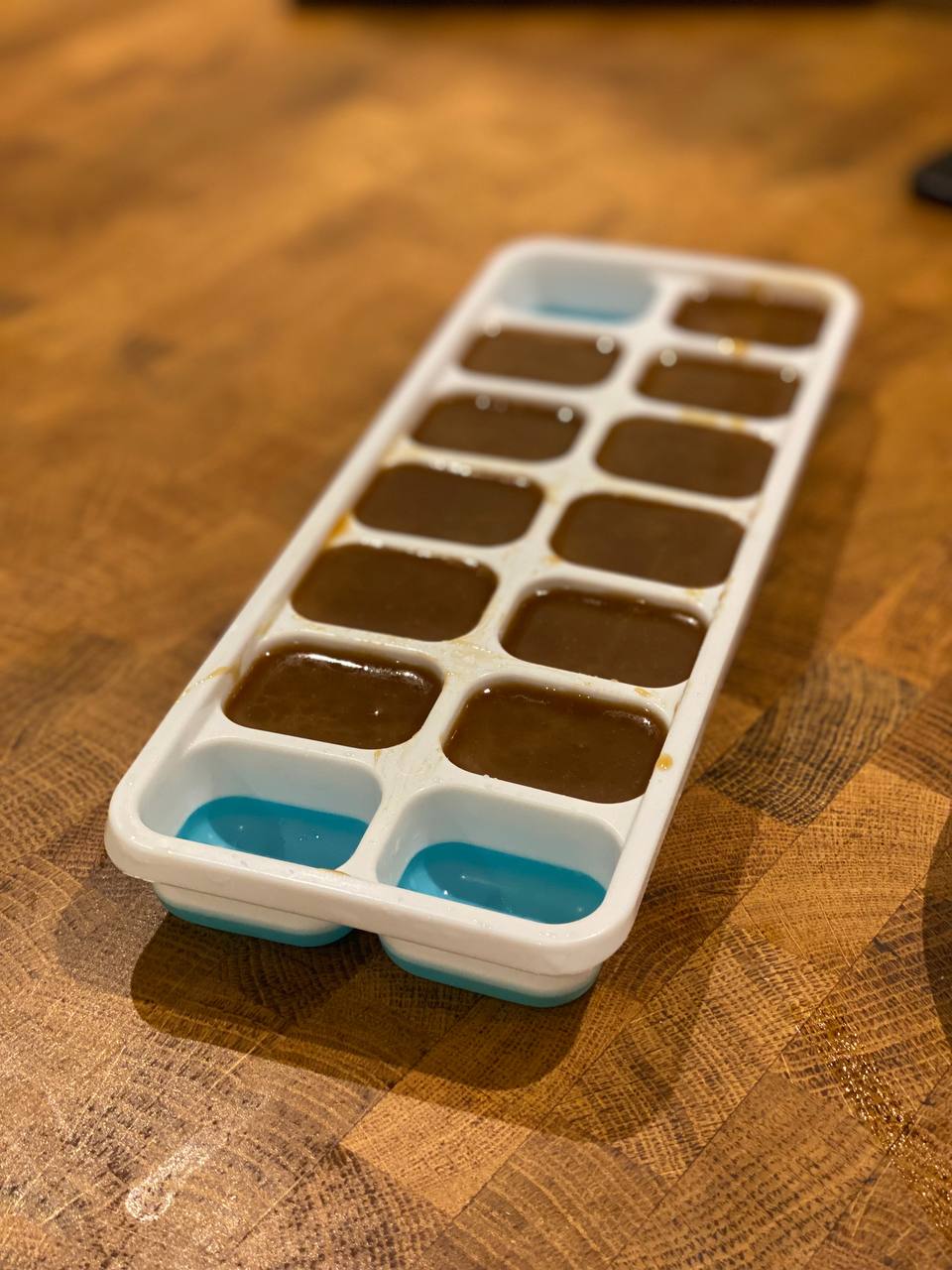
And here we go, home-made boullion cubes.
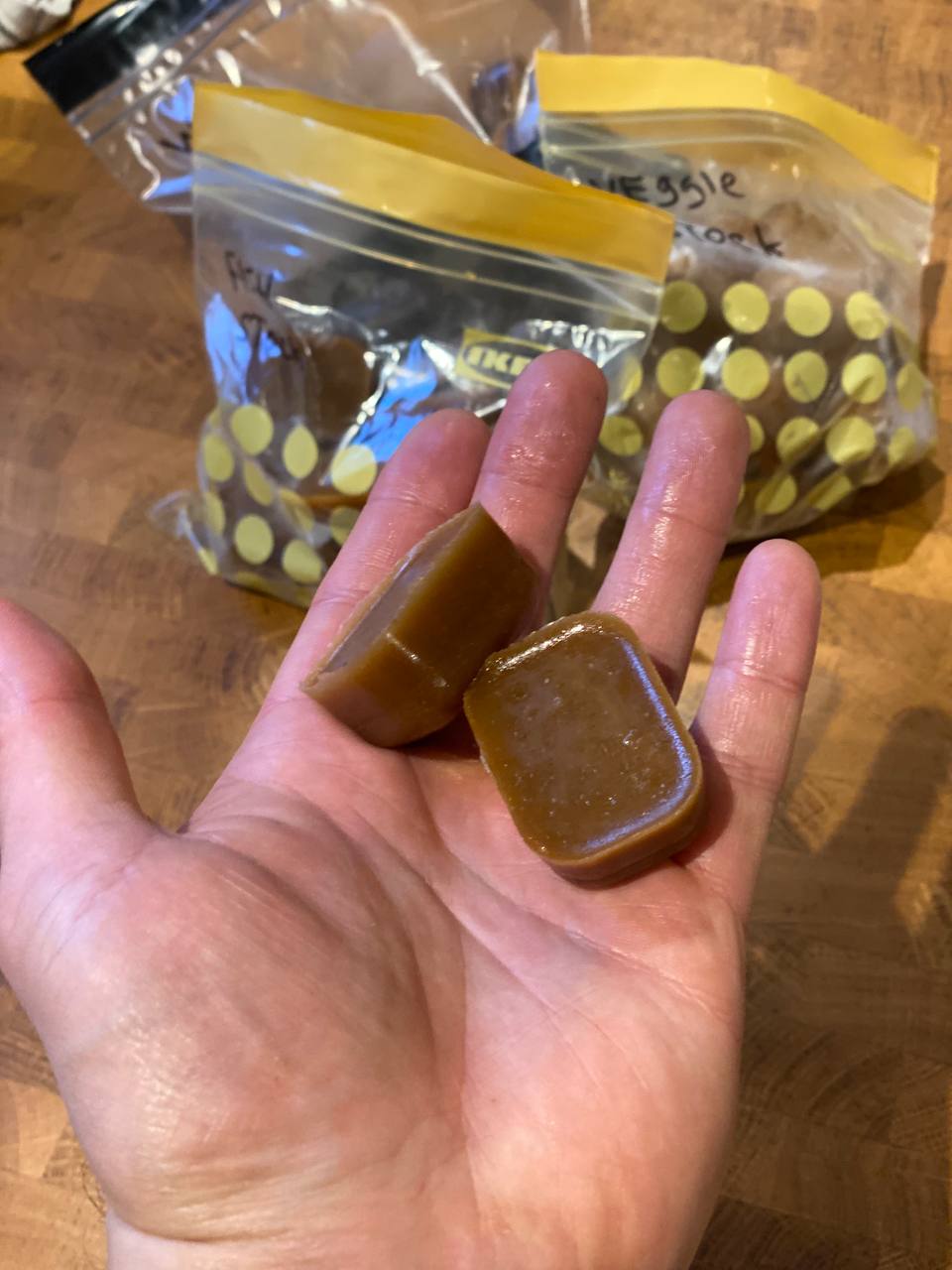
Sasha already made some sipping broth out to try them out and it was definitely worth the effort.
Enjoying this? Get Tuesday Triage in your inbox every week.
Things I enjoyed reading
1. You Don’t Know How Bad the Pizza Box Is by @asaahil_desai
Ever since we've got a pizza oven, ordering takeaway pizza became my guilty pleasure, reserved for days when I want to down 4000 kkal in one go and then complain about stomachache for days, but this is a really good overview of things wrong with a conventional pizza box.
A pizza box has one job—keeping a pie warm and crispy during its trip from the shop to your house—and it can’t really do it. The fancier the pizza, the worse the results: A slab of overbaked Domino’s will probably be at least semi-close to whatever its version of perfect is by the time it reaches your door, but a pizza with fresh mozzarella cooked at upwards of 900 degrees? Forget it. Sliding a $40 pie into a pizza box is the packaging equivalent of parking a Lamborghini in a wooden shed before a hurricane.
It also reminded me about that patent for a pizza box that Apple made years ago. Look up their commercial if you didn't before.
2. How to write English prose by David Bentley Hart
Writing prose is more complex than poetry, argues the author, and there seems to be reasons for that:
Every great national prose, in just about any tongue, reaches its high meridian only by way of a prolonged and constant negotiation of just this tension between beauty and sublimity—between the decorative and the august, or between the splendid and the lucid. And this comes only at the end of long epochs of development. To be able to balance expressiveness and reticence, or to know when to cast that balance away, requires tact and ingenuity and taste on the part of writers; but it also requires a language of sufficient maturity. This is why prose of any consequence invariably arrives far later in a culture’s history than does great poetry.
I used to learn how to write both following templates, and that one way to produce coherent output, but can it actually be good? I am pretty sure that the answer is a yes, when it comes to poetry, but not so sure about prose.
3. The contagious visual blandness of Netflix by @halemur
Recently we've watched a bunch of English action movies from early 2000s, and comparing to the modern ones, there is lots of visual difference. It's not about the quality, it's mostly about the lights, the frames, the overall picture.
The latter is more polished and “perfect,” but to what effect? It looks strange, surreal, both dim and bright at the same time. Everything is inexplicably blue or yellow, and glows like it’s been FaceTuned. Meg Ryan and Billy Crystal, meanwhile, are sitting in a downtown New York deli that actually exists. The image is a little grainy, the lighting falling somewhere in the normal daytime range, and they look like regular human beings. The table’s lopsided, the kitchen’s bent out of shape—the charm is earned. Today the restaurant might be built on a sound stage, or shot in front of a green screen, the appearance of daylight added in post-production.
I am not sure which one I prefer. The modern picture is indeed more entertaining to look at, but the older ones feel way more realistic.
4. How to Make Yourself Into a Learning Machine by every.to
Learning is probably my biggest daily motivation, whether it's about cooking or writing this newsletter or just going on with my usual day. And yet there is never enough content on how to learn better.
I think memory is underrated.
For example, memorizing all of the U.S. presidents is something that people might think is for show. But to me it’s actually really helpful to know who was president at a certain time because it allows you to connect the president with that time period.
The post is essentially an interview with one of the Spotify directors, so it comes with some street cred as well.
5. The Point Of The Banach-Tarski Theorem by @ColinTheMathmo
Right, so the Banach-Tarski theorem is a fancy math rule that says you can take a ball, like a beach ball, and cut it up into a bunch of little pieces. Then, if you move those pieces around and put them back together in just the right way, you end up with two exact copies of the original beach ball.
Now, if you already know what the Banach-Tarski theorem says, that riddle is really funny. If you don't, then you're simply not in the audience, and you'll just go: "Huh?"
Which is a perfectly reasonable reaction. Indeed, if you then have the Banach-Tarski theorem explained to you, you most likely will still go: "Huh?" It's a perplexing result, some even call it a paradox, but the fact that it's so odd actually masks the fact that it's a truly important result, with some deep implications.
The way I was taught, it's kind of like a magic trick for math. But it's really hard to do in real life and it's mostly used to show that some things in math are impossible. The post is pretty cool though, and the riddle is indeed really funny.
6. How to Create Luck by @swyx
I really enjoyed this take on proactive behaviour that draws luck:
Those who believe in their own agency answer the former. Others - who’ve seen people smarter and harder working than them fail - answer the latter. Those who are politically correct cop-out with the half-and-half.
It can be comforting to subscribe to the binary luck model. If you just got a bad roll of the dice, there’s nothing you could do. Your lack of success is not your fault.
But what if I told you there are people who have skill at creating luck for themselves?
However at that point one might ask, what is luck then, if it's driven by our conscious decisions?
7. Japan was the future but it's stuck in the past by Rupert Wingfield-Hayes
I haven't been to Japan yet but heard many good things from tourists, and not a single one from a person that lives there. Now, it either tells something about the people I interact with, or the fact that the country is not moving forward the way people wish it were.
"This is such a beautiful place," I said to them. "I'm sure lots of people would love to live here. How would you feel if I brought my family to live here?"
The air in the room went still. The men looked at each other in silent embarrassment. Then one cleared his throat and spoke, with a worried look on his face: "Well, you would need to learn our way of life. It wouldn't be easy."
The village was on the path to extinction, yet the thought of it being invaded by "outsiders" was somehow worse.
Hopefully I will get a chance to judge for myself some time soon.
8. Job Hunting in 2022 by @mhlakhani
I am not looking for a job but still enjoy reading about other people's takeaways from recent job hunts: it both helps me to understand the market and also allows for better calibration of jobs I am recruiting for.
My goal through the process was to find a place I'd be happy learning and growing for at least 4-5 years, and discover what type of work I wanted to do next (e.g. nonprofit, big company, small company, different industries, management vs engineering, etc). So, throughout this process, I applied to a lot more places than I would have done. But, hey, as a candidate, we get to interview companies just as much as they interview us, so I decided to use this opportunity accordingly.
And this is a very good definition of one's search criteria. Good companies often look for someone happy to grow and learn for at least 4-5 years too – such a shame it doesn't happen often enough.
9. The Violent Focus of Francis Bacon by @jmrphy
There were quite a few Francis Bacons in British history, but the artist is probably the most famous, and while his birthplace is in Ireland, he used to live and work a lot in London, Chelsea, so I occasionally pass by his former house.
Into this chaotic atelier, Bacon allowed almost nothing other than painting supplies and his varied source materials: Photographs, books, magazines, etc.
He locked himself into an otherwise closed circuit of his own reflections. He would even write handwritten notes to himself about what he should be thinking about.
Not a bad place to lock yourself into, judging by the outside.
10. Manage like an engineer by @benbalter
I don't see nearly enough posts about management for engineers, especially with good examples, and this is definitely one of those:
Managing like an engineer means using the same tools and workflows that engineers use to plan, track, and communicate their own work. It means making work visible, writing things down, and embracing collaboration. After all, if that’s the best way to build software, should it not also be the best way to manage software development?
I'd probably challenging using Github as a platform for it though, partly because of the author's participation in its development, but it's more about the concept anyway.
Did you know I make apps?
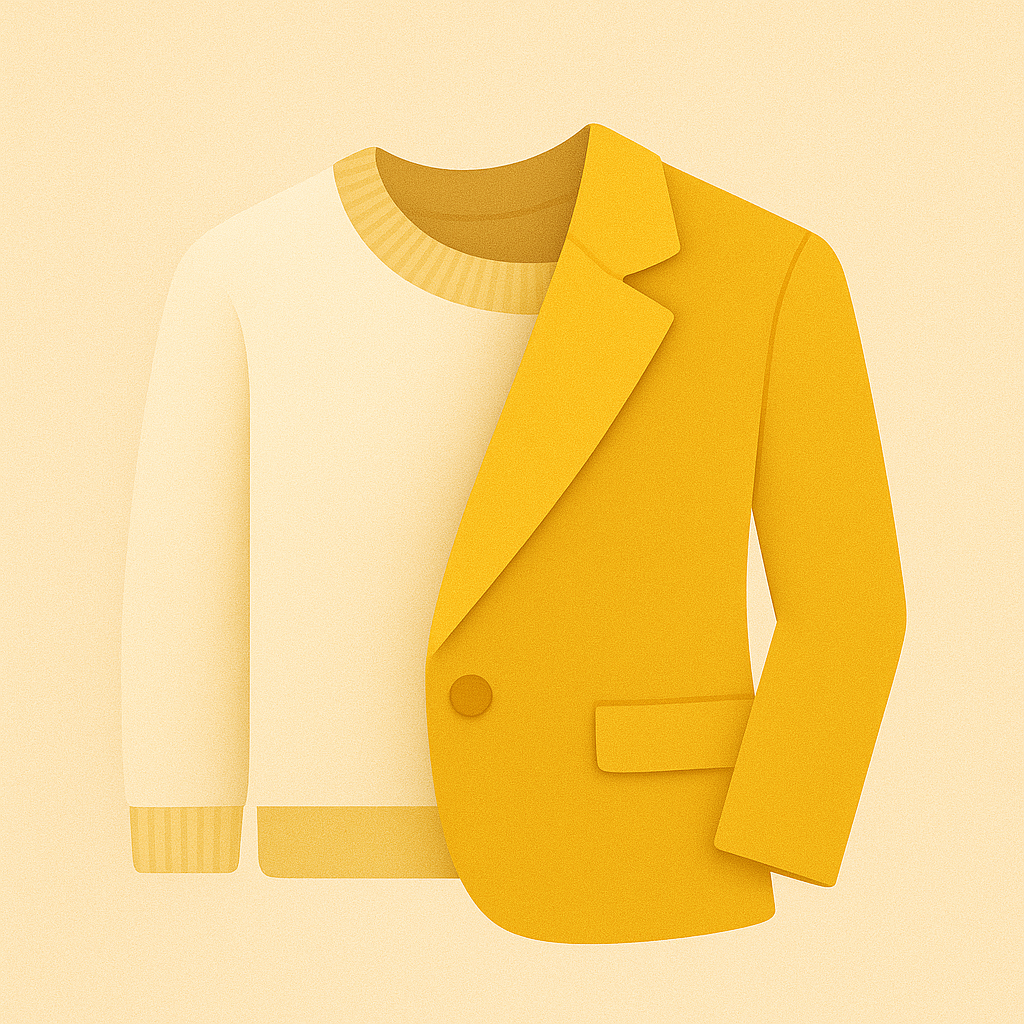
Layered
I never know what to wear. Now AI suggests outfits from my actual wardrobe based on weather and what I haven't worn in a while.
Take a look →Things I didn't know last Tuesday
1. Victorians didn't “dress” their naked furniture legs with fabric
I came across a post that Victorians would cover furniture legs with fabric to avoid inappropriate thoughts, and immediately went to look up proofs because that'd be a cool thing to share.
Sadly it's a myth, and we can even trace its origins:
Whether Marryat is exaggerating or not is subject to speculation–he is certainly poking fun at the Americans–but I can attest that, after having paged through a dozen books showing old, black-and-white photos of Victorian interiors, I saw not one example of a table, piano, or any other piece of furniture with skirts around its individual legs.
At least I didn't lie to subscribers (and also this is still a cool thing to learn).
2. Bombini
One might think that akin to arancini, bombini is some Italian delicacy. Well, it's not:
The Bombini are a tribe of large bristly apid bees which feed on pollen or nectar.
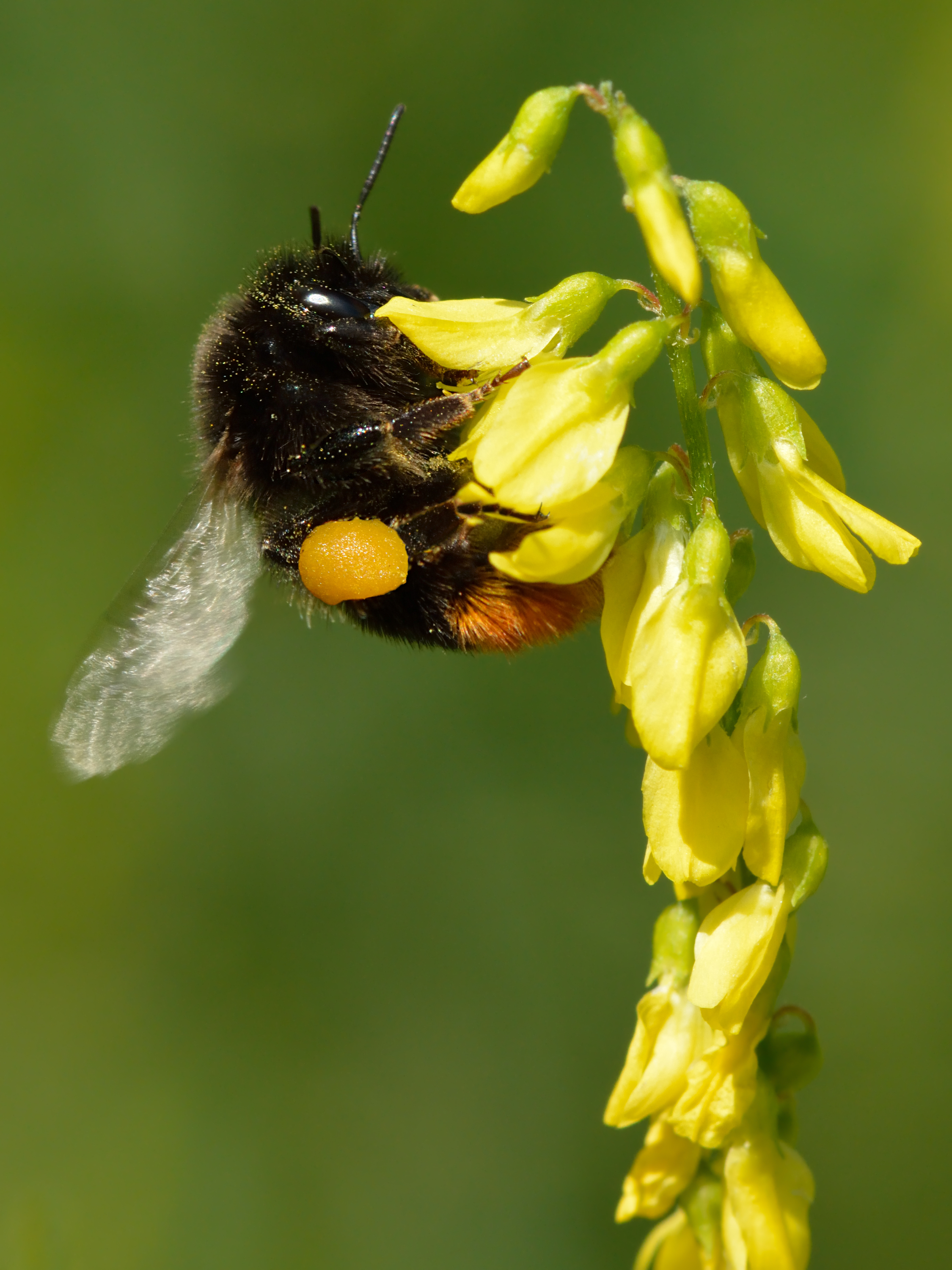
The most famous member of Bombini familiy is a bumblebee.
3. 365 Knitting clock
Such a cool idea (there are a few pictures of it in action at the website):
365 Knitting Clock stitches time as it passes by. It knits 24 hours a day, one year at the time, presenting the physical representation of time as a creative and tangible force. After 365 days the clock has turned the passed year into a two-meter long scarf. Now the past can be carried out into the future and the upcoming year is hiding in a new spool of thread, still unknitted.
Such a shame only a handful of such clocks was made. I don't need so many scarfs as well, but that's a pretty near gift to close friends too.
4. Average age at conception for men versus women over past 250,000 years
It's not like I forget how cool modern technologies are, but every time I face something like that – a technology to find out average age at conception from DNA samples – I get really excited.
[...] the average age that humans had children throughout the past 250,000 years is 26.9. Furthermore, fathers were consistently older, at 30.7 years on average, than mothers, at 23.2 years on average, but the age gap has shrunk in the past 5,000 years, with the study's most recent estimates of maternal age averaging 26.4 years.
What's interesting is that the age gap shrinks for the past 5000 years, not just last century or so as I'd guess.
5. European flying squid
There is a squid with a hilarious name:
The European flying squid (Todarodes sagittatus) is a species of squid from the continental slope and oceanic waters of the eastern Atlantic Ocean and the Mediterranean Sea.

The name is because they use their propulsion system to (briefly) glide through the air.
6. How do we experience the pain of other people?
When I watch action movies I occasionally twitch in pain feeling some kind of rapport with characters on screen, and seems like scientists now can explain the extent of that:
This is exactly what they found: throughout the insula, they could record electrical activity that scaled with the pain the people reported perceiving in the movies. This was true in the local field potentials, and even in individual neurons, providing the first evidence, that a brain region involved in our own pain, contains a fine-grained representation of how much pain others experience.
I am just happy I am not alone with such response.
7. Tocharian languages
There is an extinct branch of languages that wasn't discovered until last century and changed the way we think about Indo-European languages.
The languages are known from manuscripts dating from the 5th to the 8th century AD, which were found in oasis cities on the northern edge of the Tarim Basin (now part of Xinjiang in Northwest China) and the Lop Desert. The discovery of these languages in the early 20th century contradicted the formerly prevalent idea of an east–west division of the Indo-European language family as centum and satem languages, and prompted reinvigorated study of the Indo-European family.

Read the details if you want to understand how English mead is related to Chinease mì (honey), Dutch mede (honey), or Proto-Slavic medъ (honey).
8. Acting out dreams predicts Parkinson’s and other brain diseases
We still can't predict many brain diseases but at least there is some research going on:
Acting out dreams marks a disorder that occurs during the rapid eye movement (REM) phase of sleep. Called RBD, for REM sleep behavior disorder, it affects an estimated 0.5 to 1.25 percent of the general population and is more commonly reported in older adults, particularly men. Apart from being hazardous to dreamers and their partners, RBD may foreshadow neurodegenerative disease, primarily synucleinopathies—conditions in which the protein α-synuclein (or alpha-synuclein) forms toxic clumps in the brain.
Not all nocturnal behaviours count towards these though, like sleepwalking and sleeptalking because they happen during non-REM sleep so are unrelated.
9. Dexai
People were writing words on bullets for a very long time:
Ancient Greek lead sling bullets with a winged thunderbolt moulded on one side and the inscription "ΔΕΞΑΙ" (Dexai) meaning 'take that' or 'catch' on the other side, 4th century BC, from Athens, British Museum.

The rest of the Wiki article is about slings and that's quite entertaining too.
10. Piero della Francesca's symbolic egg
Probably the level of insights here is close to Dan Brown's books but still:
One such enduring mystery is the egg suspended from the ceiling in Piero della Francesca's Montefeltro Altarpiece. A cursory analysis may state that the egg is well known symbol of fertility and birth - a suitable motif for a painting featuring the Christ child. Other readings see this object as a large pearl, which along with the shell represented in the architectural features behind may represent the purity of the Virgin. However, a look at the history of the use of eggs suspended in Churches pre-dates the Renaissance, and can also be seen in Islamic images.
I am yet to remember that interacting with art means searching for symbols everywhere.
Book of the week
I am a huge fan of modern desserts, and while Cedric Grolet is probably the most famous pastry chef on the frontiers of the genre, there are other notable players as well.
For one, Albert Adrià, and his Cakes and Bubbles cafe in London. I haven't been there myself but Sasha actually came back moderately unimpressed so now I am really curious.
This week's book is not about Albert though, it is about his older brother Ferran Adrià, who is probably one of the most famous chefs in the world.
It is somewhat fitting that his first-ever biography is written by one of the world's foremost food critics, Colman Andrews, in his book Ferran:
The welcome at El Bulli—what the French call the accueil —is warm and professional. Guests are greeted, then led straight into the kitchen for a ritual introduction to Ferran. Oohing and aahing generally ensues, and most people seem to want to say something to Ferran, whether or not they have a language in common with him, even if it’s just to comment on how beautiful the kitchen is or how much they’ve looked forward to coming here. Someone in almost every group takes a picture or asks one of the staff to snap one of them with Ferran. He is a good sport about it, posing, smiling, allowing arms to be thrown briefly around his shoulders. The ritual observed, guests sometimes choose to have an apéritif on the terrace or else are taken straight to their table. Once they’re seated, the show begins. There isn’t a whiff of pretension about the service or a hint of overfamiliarity. The tone is perfect. Sitting there in this fabled dining room on a comfortable chair or banquette at a commodious table, the diner feels superbly taken care of, cosseted, privileged. The only surprises, the only unexpected moments, of the evening will come from the food—and those will be momentous ones.
There used to be an à la carte menu at El Bulli, but since 2002 only a multicourse tasting menu has been offered, on the theory that (as Ferran has said) “how you eat is as important as what you eat.” El Bulli, he points out, was the first three-star restaurant to discard the à la carte menu. “From the moment we did,” he says, “people no longer chose what they were going to eat: It was we who chose for them.”
The book itself is a bit controversial, but that's more-or-less common for biographies that are written by other people, hence I tend to read way more autobiographies instead.
I also didn't cook many of Ferran's dishes, partly because they are mostly published in Spanish books, but also because of the amount of effort involved (yes, Heston Blumenthal's recipes comparing to these are just walk in a park).
I do use his ideas nearly daily though, whether it's clarification, spherification, or just making a really fluid gel, so reading about the story of such an iconic person and such an iconic restaurant was really nice.
Thank you and see you in a week
(or in a month)!
If you'd like to support the newsletter, please subscribe to the weekly plan. Otherwise you will keep receiving the letters on a monthly cadence – no need to do anything to opt-in.
If you have any questions, or want to suggest a link for the next newsletter, please drop me a message on Twitter or reply to this email.
Cheers! 🍸
Need help with iOS?
I spent a decade on FDA-regulated medical devices and apps with millions of users. Now I help teams ship MVPs, rescue messy architectures, and build the hard bits that don't fit in a sprint.
Learn more →